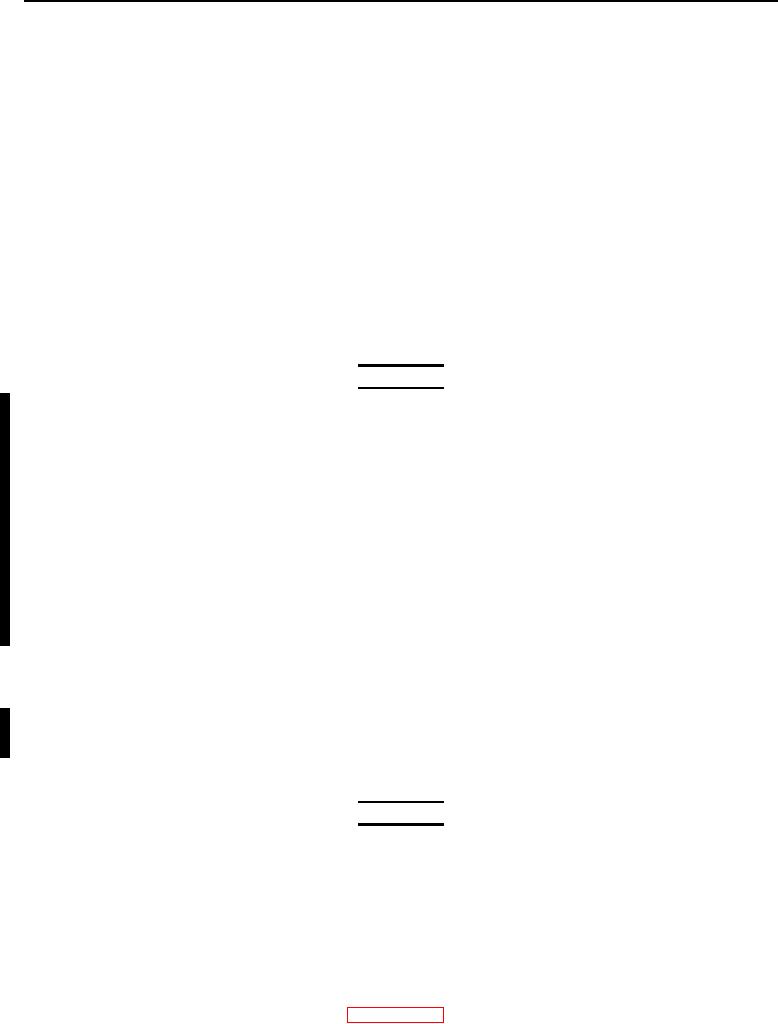
TM 5-5420-280-23&P
0015 00
PREVENTIVE MAINTENANCE CHECKS AND SERVICES (Contd)
CORROSION PREVENTION AND CONTROL (CPC)
a. Corrosion prevention and control (CPC) of Army materiel is a continuing concern. It is important
that corrosion problems are reported so they can be corrected and improvements can be made to
prevent future problems.
b. While corrosion is typically associated with rusting of metals, it can also include deterioration of
other materials, such as rubber and plastic. Unusual cracking, softening, swelling, or breaking of
these materials may be a corrosion problem.
c. If a corrosion problem is identified, it can be reported using Standard Form 368, Product Quality
Deficiency Report. Use of key words such as corrosion, rust, deterioration, or cracking will ensure that
the information is identified as a CPC problem.
d. The form should be submitted to the address specified in DA Pam 750-8.
SPECIAL INSTRUCTIONS
Preventive maintenance is not limited to performing the checks and services listed in the PMCS.
WARNING
Cleaning solvent is combustible. Use mechanical ventilation
whenever product is used in a confined space, heated above
ambient temperatures, or agitated. DO NOT use or store near heat,
sparks, flame, or other ignition sources. Keep container sealed
when not in use.
Contact with cleaning solvent may cause skin irritation. Use
chemical-resistant gloves. In case of skin contact, remove any
contaminated clothing and wash skin thoroughly with soap and
water. Wash contaminated clothing before reuse. Eye contact may
cause irritation, tearing, or blurring of vision. Use face shield or
goggles when eye contact may occur. In case of eye contact, flush
eyes with large amounts of water for at least fifteen (15) minutes or
until irritation subsides. Inhalation may cause irritation to upper
respiratory passages. DO NOT have food or drink in the vicinity.
Failure to comply may result in injury to personnel.
Compressed air source will not exceed 30 psi (207 kPa). When
cleaning with compressed air, eyeshields must be worn. Failure to
comply may result in injury to personnel.
a. Keep it clean. Dirt, grease, oil, and debris get in the way and may cover up a serious problem.
Clean work area as needed. Use cleaning solvent on all metal surfaces. Use soap and water to clean
rubber or plastic material.
b. Bolts, nuts, and screws. Check them all for obvious loose, missing, bent, or broken condition. Look
for chipped paint, bare metal, or rust around bolt heads; check and tighten where necessary.
WARNING
The bleed valve on hydraulic line should be used to bleed residual
pressure from the line prior to disconnecting. When disconnecting
any hydraulic line, open line slowly and protect face; hydraulic oil
may spray out due to residual pressure in system. Failure to
comply may result in serious injury to personnel.
c. Hydraulic lines. Look for wear, damage, and leaks. Ensure clamps and fittings are tight. Wet spots
and stains around a fitting or connector can mean a leak. If a leak comes from a loose connector,
tighten it. If something is broken or worn out, refer to the appropriate maintenance Work Package
(WP) task and repair or replace it.
d. Data plates. Check all data plates. If any plate is worn, broken, painted over, missing hardware, or
unreadable, it must be replaced. Refer to WP 0132 00.
Change 1
0015 00-2

